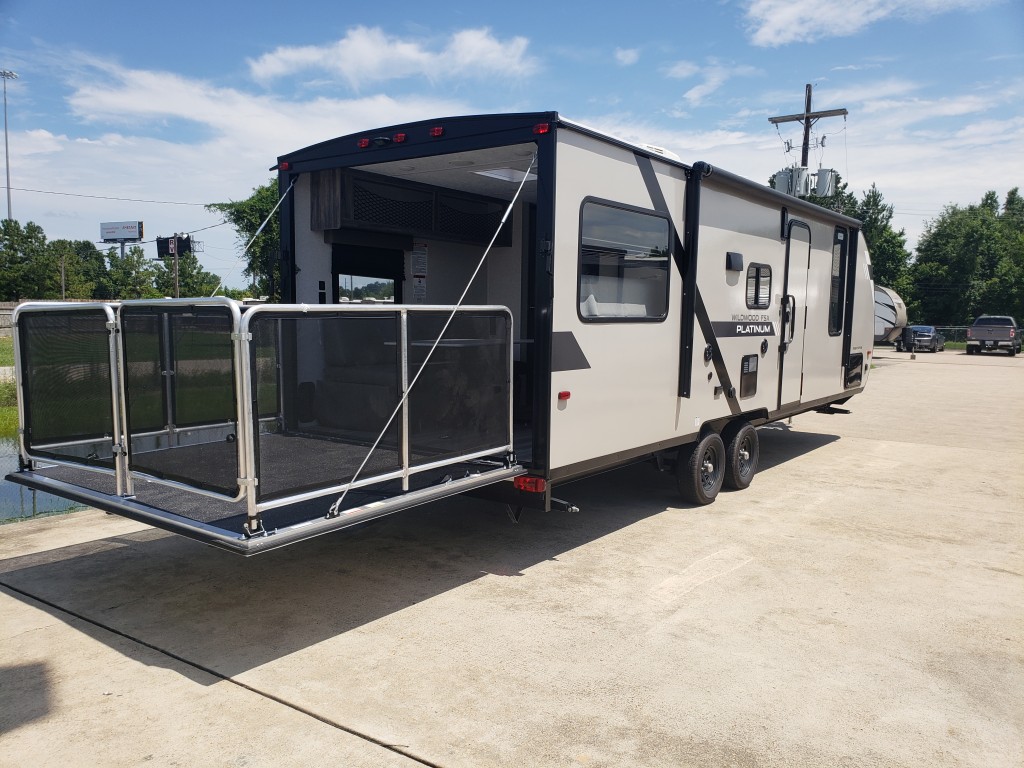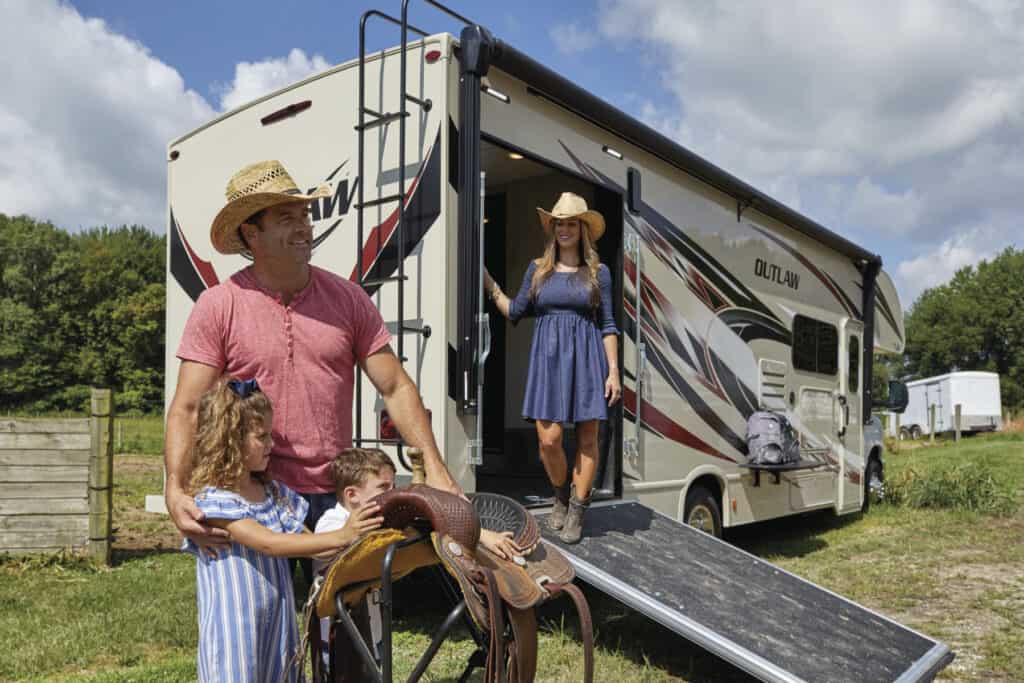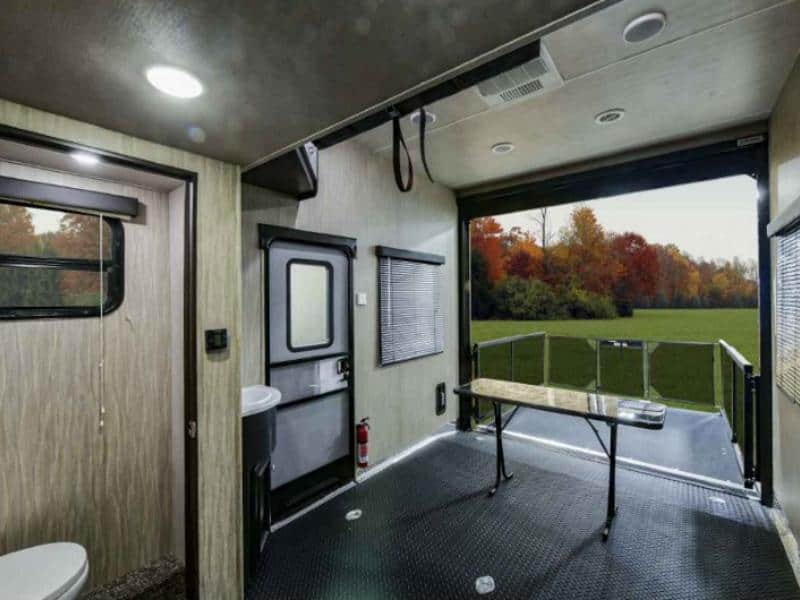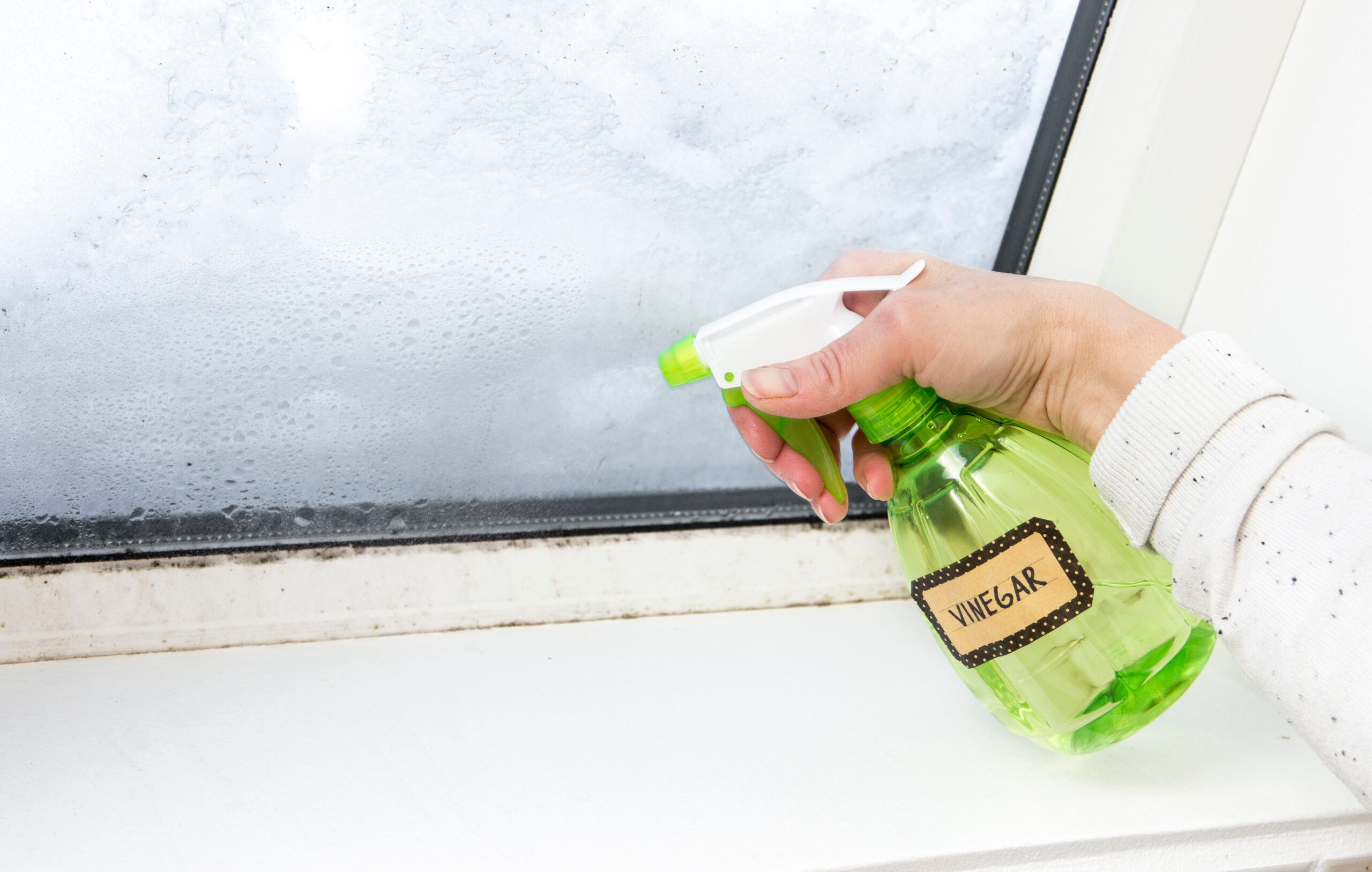
What Is A Toy Hauler (And Why Should You Get One)?
The recent passing of Mark Warmoth, known in industry circles as the inventor of the toy hauler, has raised a lot of conversation among new RVers, namely, what is a toy hauler? Every RV type has its own special features that make it unique for both travel and adventure. Toy haulers are no exception.
Toy haulers in a nutshell
A toy hauler is an RV that has both a living area and a garage or storage area. Typically the living quarters—bedroom, kitchenette, and bathroom—are located in the front of the unit, and a space to house cargo like ATVs, golf carts, and snowmobiles is in the rear. In most models, the rear wall of the toy hauler flips down, creating a ramp to allow easy access to toys and other equipment.
A toy hauler can be designed as a Class A, Class C, fifth wheel, or travel trailer. According to Consumer Reports, in general, toy haulers range in length from 18 to 40 feet and have a dry weight of 3,000 to 10,000 pounds. They can sleep anywhere from 4 to 8 people comfortably. Retail price is anywhere from $10,000 to $150,000 or more.
Who uses toy haulers?
Initially, toy haulers were designed for outdoor enthusiasts, anyone that wanted to take off for a camping trip, toys in tow. Toy haulers are an all-in-one package. RVers can enjoy their motorcycles, quads, bikes, or side-by-sides for the day and then end the day with a nice homecooked meal, hot shower, and restful sleep in their comfy bed. A toy hauler offers all of these conveniences.
Besides taking toy haulers into the lush forest, the vast expanse of the desert, or over snowy terrain, RVers have traveled to motorsports competitions or other popular gatherings like Sturgis Bike Rally. Instead of bringing along a cargo trailer and staying at a hotel for the duration of the event, they opt to travel and stay in their toy hauler and safeguard their equipment as well.
Some RVers have chosen toy haulers for other purposes. They transform the “garage” area into rooms like an office area, playroom, mini gym, woodworking shop, you name it. Toy haulers are not limited to “toys” any longer. This area is prime real estate for all kinds of scenarios.

Types of toy haulers
Travel trailer toy hauler
The original toy hauler was built on a travel trailer frame. Travel trailer toy haulers are towed by vehicles utilizing a bumper hitch. Also called pull-behinds, they continue to be the most affordable type of toy hauler available on the market.
They range widely in length, weight, design, and style. Aside from the cargo room, they include a living area complete with galley, bedroom, and bathroom but can be outfitted with more square footage (lengthwise or with slide-outs) and upgraded amenities.
Fifth wheel toy hauler
A fifth wheel toy hauler is towed by a truck using a specific apparatus attached to the bed of the truck. Like other fifth wheels, these toy haulers also have the characteristic “gooseneck” at the front of the RV.
The other defining features include high ceilings, more luxurious interior options like granite countertops, and multiple slide outs to open the living space. The cargo space might be an open space in the rear or a separate room.
Class A motorhome toy hauler
Class A motorhomes are RVs that resemble tour buses, only these rigs come complete with a “garage.” These toy haulers offer top of the line living accommodations and space to store toys inside, and they also have the advantage of towing a much larger vehicle behind. They are the most expensive purchase among the toy hauler types due to their engine (diesel being more costly than gas), size, and heavy-duty construction.
Class C motorhome toy hauler
Class Cs can be toy haulers as well. They are usually smaller than Class A and can be identified apart from any other motorhome with the cab-over profile.
They are built on a truck chassis with a diesel or gas engine. Class C motorhomes vary in layouts and styles, and they include the usual living arrangements of a bedroom, bathroom, and kitchen along with a storage area.

Toy hauler features
Many of these features are exclusive to toy haulers due to their original purpose, incorporating rugged, outdoor adventure and creature comforts with all the necessary equipment at hand.
Toughness
Toy haulers were designed to travel off the beaten path, so particular standards must be met to accomplish this off-road experience. One feature is more ground clearance to protect the underbelly from rugged terrain.
Another feature is higher-rated axles to handle the gross vehicle weight (GVW) as it rolls and bounces around. Not only the overall construction, but furniture and compartments built into the RV should be able to withstand the bumps, dips, and everything else that comes with off-grid, wilderness camping.
Weight
Toy haulers can be a bit of a challenge to pack safely. Not only do you want to load the RV appropriately for towing purposes, but you want to evenly distribute the weight so individual tires are not overloaded.
This is where understanding your toy hauler’s dry weight and gross weight come into play, along with your towing vehicle’s limit. With toy haulers, you have your outdoor equipment and vehicles to consider, along with belongings for your living quarters.
Layout
For the most part, the signature storage room/space that sets a toy hauler apart from other RVs is located in the rear. Some units have this area tucked away in the front of the RV. This is more prevalent with travel trailers. In this case, a side door flips down to easily maneuver the toy(s) in and out.
As mentioned before, toy haulers have a living area complete with a sleeping area, bathroom, and kitchen. They are built to be used in dry camping situations and at campgrounds with full hookup options. Just like other self-contained units, toy haulers have water tanks (freshwater, grey, and black), a slew of built-in appliances like an air conditioner, generator, a propane set-up, and other amenities.
Collapsible/Portable furniture
Many toy haulers can comfortably fit 8 campers, but to do this, the manufacturers had to get creative with furniture and other parts of the rig. For example, the rear portion of many toy haulers is not only built for storing toys, but it can also double as an extra bedroom or living room.
Collapsible and/or portable beds, couches, and tables can be situated in this area as needed. Some RVs have beds that drop down from the ceiling with the push of a button. With more sophisticated models, the back door/ramp can double as a porch, complete with fencing.
The history of the toy hauler
During his early years working for Alfa Leisure, Mark Warmoth would go out to the desert on the weekend with his friends. Warmoth and his wife would take two separate vehicles for the camping trip, a truck pulling their travel trailer and another truck pulling a flatbed with their toys strapped on. He started brainstorming ways to make the trips less of a hassle, and the idea of a trailer with additional storage in the back for ATVs or bikes was born.
He was given the go-ahead to create a few prototypes, calling them “Alfa Toy Houses.” Seeing the enormous potential of this hybrid RV, Warmoth set out on his own. It was a slow progression, but he eventually made a name for himself behind his brand, Weekend Warrior.
“When I started in 1998, I want to say he built three a day,” Max Villa, who worked for Warmoth said. “And if I can remember correctly, I would say about 2006, 2007, and by early 2008, we were building about 24 a day. So, it had significantly grown.”
Warmoth never took credit for pioneering the toy hauler. In an interview with RV PRO, a decade ago, Warmoth explained,
“By the time I’d started Warrior, people were almost home-building their own because there was no place for them to go buy one. The need was there. Empty cargo box trailers had been popular for a few years – people were starting to put K-Mart cabinets and freshwater tanks and lights in these empty cargo boxes. People were paying cash for everything and building it in their garages, so they didn’t have any resale value and they were expensive. Really, what I brought to the table was resale value and a level of quality, because when you build something on the assembly line, it builds a level of quality that’s better than home-built.”
Villa disagreed, “He pioneered toy haulers, so what people are doing today, when they’re putting toys inside and going to the desert and going to the river, it really was him who started it.”
Randy Hunter, the R&D manager at Lance Camper and a former employee of Warmoth’s agreed with Villa,
“I know Mark would never take credit for being the mastermind behind the design and development of what would become one of the strongest and fastest-growing segments within the RV industry, but he will always be known as the man that chiseled the name toy hauler in the history books of the RV Industry.”
More insight on toy haulers
One of the best ways to learn more about a subject beyond literature is to get a variety of perspectives from others who have experience and expertise on the subject matter.
Besides visiting local dealerships or RV shows featuring toy haulers, you can consult others using online forums like iRV2. Fellow RVers discuss everything about toy haulers: living quarters to types of toys stored, initial purchases to selling used units, and routine maintenance to preferred upgrades.
The following video from Rollin’ on TV takes viewers on a tour of three separate toy haulers, beginning with what is considered an entry-level unit.
You may also like: These Custom Cargo Trailers Can Haul You & All Your Gear



